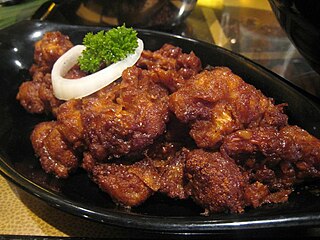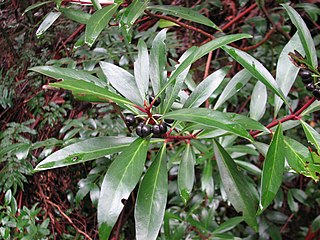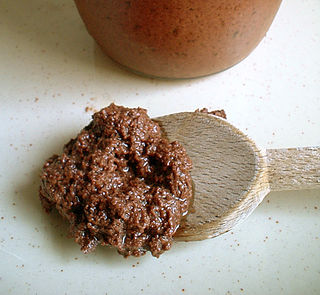Related Research Articles

A cuisine is a style of cooking characterized by distinctive ingredients, techniques and dishes, and usually associated with a specific culture or geographic region. Regional food preparation techniques, customs, and ingredients combine to enable dishes unique to a region.

Fusion cuisine is a cuisine that combines elements of different culinary traditions that originate from different countries, regions, or cultures. They can occur naturally and become aspects of culturally relevant cuisines, or they can be part of the post-1970s movement for contemporary restaurant innovations.

Haute cuisine or grande cuisine is the cuisine of "high-level" establishments, gourmet restaurants, and luxury hotels. Haute cuisine is characterized by the meticulous preparation and careful presentation of food at a high price.

California cuisine is a food movement that originated in Northern California. The cuisine focuses on dishes that are driven by local and sustainable ingredients with an attention to seasonality and an emphasis on the bounty of the region.

Paul François Pierre Bocuse was a French chef based in Lyon known for the high quality of his restaurants and his innovative approaches to cuisine. Dubbed "the pope of gastronomy", he was affectionately nicknamed Monsieur Paul. The Bocuse d'Or, a biennial world chef championship, bears his name.

Tasmannia is a genus of woody, evergreen flowering plants of the family Winteraceae. The 40 species of Tasmannia are native to Australia, New Guinea, Sulawesi, Borneo, and the Philippines. The Winteraceae are magnoliids, and are associated with the humid Antarctic flora of the Southern Hemisphere. The members of the family generally have aromatic bark and leaves, and some are used to extract essential oils. The peppery-flavored fruits and leaves of this genus are increasingly used as a condiment in Australia. The peppery flavour can be attributed to polygodial.

Tapenade is a Provençal name for a spread, condiment and culinary ingredient consisting of puréed or finely chopped olives, capers, and sometimes anchovies. Vegan versions that are available commercially do not contain anchovies. Tapenade's name comes from the Provençal word for capers, tapenas. It is a popular food in the south of France, where it is generally eaten as an hors d'œuvre spread on bread, with fish, in salads, and sometimes used to stuff poultry for the main course.

Bush tucker, also called bush food, is any food native to Australia and historically eaten by Indigenous Australians, the Aboriginal and Torres Strait Islander peoples, but it can also describe any native flora, fauna, or funga used for culinary or medicinal purposes, regardless of the continent or culture. Animal native foods include kangaroo, emu, witchetty grubs and crocodile, and plant foods include fruits such as quandong, kutjera, spices such as lemon myrtle and vegetables such as warrigal greens and various native yams.

Basque cuisine refers to the cuisine of the Basque Country and includes meats and fish grilled over hot coals, marmitako and lamb stews, cod, Tolosa bean dishes, paprikas from Lekeitio, pintxos, Idiazabal sheep's cheese, txakoli, and Basque cider.

Tasmannia lanceolata, commonly known as Tasmanian pepperberry or mountain pepper, is a shrub native to woodlands and cool temperate rainforest of south-eastern Australia. The shrub varies from 2–10 metres (6.6–32.8 ft) high. The aromatic leaves are lanceolate to narrow-elliptic or oblanceolate, 4–12 cm long, and 0.7–2.0 cm wide, with a distinctly pale undersurface. Stems are quite red in colour. The small cream or white flowers appear in summer and are followed by black, globose, two-lobed berries 5–8 mm wide, which appear in autumn. There are separate male and female plants.

Davidsonia is a genus containing three rainforest tree species native to Australia, commonly known as the Davidson plum or Davidson's plum. The fruits superficially resemble the European plum, but are not closely related. All species have an edible sour fruit with burgundy-coloured flesh and are highly regarded as gourmet bushfood.

Podocarpus elatus, known as the plum pine, the brown pine, the Illawarra plum or the Queensland Christmas tree, is a species of Podocarpus endemic to the east coast of Australia, in eastern New South Wales and eastern Queensland.
Vic Cherikoff is regarded as an authority on Australian native foods and its associated industry, having been involved in the selection and commercialization of many of the 35 or so indigenous Australian plant foods now in the market place.
The modern Australian native food industry, also called the bushfood industry, had its initial beginnings in the 1970s and early 1980s, when regional enthusiasts and researchers started to target local native species for use as food. Indigenous Australians had been harvesting many species for use as food and medicines for millennia. In the mid 1970s Brian Powell recognized the commercial potential of quangdong fruit and began its cultivation in orchards. Following this, the CSIRO became involved in quangdong research.

Tetsuya's is a restaurant in Sydney, Australia, which is owned and operated by chef Tetsuya Wakuda. Tetsuya's cuisine is based on Australian, Japanese and classic French cuisine, and makes use of Australian ingredients. The restaurant is known for its signature dish, the Confit of Tasmanian Ocean Trout, referred to by Financial Review as "the world's most photographed dish," and has been offered since 1987. Tetsuya's, along with the French establishment Claude's, is credited with bringing a new style of fine-dining to Sydney.

Tasmannia stipitata, commonly known as the Dorrigo pepper or northern pepperbush is a rainforest shrub of temperate forests of the Northern Tablelands of New South Wales, Australia. Leaves are fragrant, narrow-lanceolate to narrow-elliptic, 8–13 cm long. Dark bluish to mauve berries follow the flowers on female shrubs. The species is dioecious, with male and female flowers on separate plants.
Peter Hardwick is an Australian food horticulturist and environmentalist, recognized as an early pioneer of the Australian bushfood industry. He publicly challenged the established belief that native Australian food plants were not suitable for cropping; conceived the commercial strategy of processing strong flavored native food plants; and, developed the use of wild and seedling genetic diversity to overcome the lack of domesticated varieties previously considered a limitation with Australian native food plants.

The Culinary Revolution was a movement during the late 1960s and 1970s, growing out of the Free Speech Movement, when sociopolitical issues began to profoundly affect the way Americans eat. The Culinary Revolution is often credited to Alice Waters, the owner of Chez Panisse restaurant in Berkeley, California.

George Francisco is an American chef based in Sunshine Coast Region, Australia. Francisco started his culinary career in the US and then moved to Australia in 2001.
References
- Bruneteau, Jean-Paul, Tukka, Real Australian Food, ISBN 0-207-18966-8.